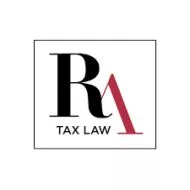Optimizing Tax Savings: Capital Cost Allowances for Computers, Software, and Related Assets in Canadian Businesses
In the digital age, particularly in the post-pandemic era, the indispensability of computers, software, and related assets to the operational fabric of Canadian businesses cannot be overstated. From small startups to large corporations, these technological tools are essential for productivity, innovation, and growth. However, acquiring these assets can represent a significant investment for businesses. Fortunately, Canada's tax legislation offers a valuable opportunity for businesses to recoup some of these costs through the mechanism known as Capital Cost Allowance (CCA) deductions.
For a general breakdown of Capital Cost Allowance deductions and their application, please refer to: What is Capital Cost Allowance? – Rosen & Associates (rosentaxlaw.com). This article focuses specifically on the deductibility of commonly used technology in the business sphere, given their prominence across various businesses of all sizes.
Computers, software, and related assets typically fall under Class 50 of the CCA system established by the Canada Revenue Agency (CRA). This class includes computer hardware, off-the-shelf software, and related equipment such as printers, scanners, and networking devices.
Once the assets are properly classified, businesses can begin to calculate their CCA deductions. The CRA provides prescribed rates for each class of assets, dictating the percentage of the asset's cost that can be claimed as a deduction annually. For Class 50 assets, the current prescribed CCA rate typically stands at 55%, allowing businesses to deduct a significant portion of the asset's cost over time.
However, businesses should be mindful of the Half-Year Rule when claiming CCA deductions. Under this provision, only half of the CCA that would otherwise be allowed in the year of acquisition can be claimed. For example, if a software that a business wanted to deduct cost $100 and fit into this category, they would not be able to deduct $55 in the first year, rather only $27.50.
The Half-Year Rule prevents businesses from strategically acquiring assets near the fiscal year-ends in order to deduct a large portion of the expense when, in reality, the asset hasn't really depreciated.
In addition to claiming CCA deductions for the cost of acquiring computers, software, and related assets, businesses should also consider the ongoing expenses associated with maintaining and upgrading these assets. Expenses such as software subscriptions, maintenance contracts, and hardware upgrades may qualify for immediate expensing or be amortized over their useful life, providing further opportunities for tax savings.
Nonetheless, businesses must remain cognizant of the potential for recapture and terminal loss when disposing of computers, software, and related assets. If the proceeds from the sale of an asset exceed its undepreciated capital cost (UCC), businesses may be required to include the excess amount in their income for the year of sale. Conversely, if the proceeds are less than the UCC, a terminal loss may be claimed, reducing taxable income.
By understanding the classification, calculation methods, and potential tax implications associated with CCA deductions, businesses can optimize their tax savings and allocate resources more effectively. Given the complexity of such deductions, it is always beneficial to speak to a legal professional with regards to tax planning matters.
The content of this article is intended to provide a general guide to the subject matter. Specialist advice should be sought about your specific circumstances.


